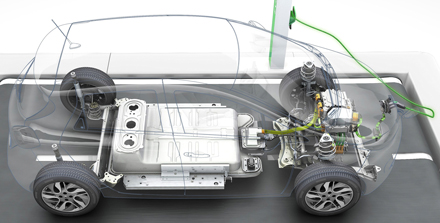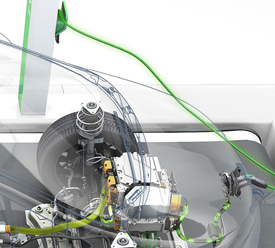|
For many years, the big challenge of EVs was to offer the
same performance as an internal combustion engine powered vehicle (i.e. a range
of several hundred kilometers and a recharge duration of a few minutes) at a
similar cost. Important breakthroughs in this area were made during the early
2010’s.
On one hand, Tesla updated the golf cart image of EVs to
propose a cool and desirable product. Now, EV is the new sexy, and former
customers of sport vehicles opt for green cars.

Photos courtesy of Renault
These early adopters were attracted
by high performance (Google “Tesla insane mode” and watch the YouTube video)
and high-tech features (on-board electronics, autonomous mode, etc.) Historically, Tesla made premium and expensive cars, but these new models offer close-to-gas
performances (over 350km autonomy and ~half-hour fast recharge mode).
On the other hand, general manufacturers have launched
almost-affordable EVs. For instance, Nissan Leaf, Mitsubishi i-MiEV and Kia Soul
EV offer “real-life” ranges from 100 to 150km for $25-35K. These electric
vehicles are aimed at the general audience (not just for geeks).
 The cost
remains high but many countries offer government rebates for EVs. Plus, customers
also consider the total cost of ownership (including gasoline savings over the
vehicle’s lifetime). Though EVs’ range cannot yet compete with the gasoline car,
they are a very interesting first step. The cost
remains high but many countries offer government rebates for EVs. Plus, customers
also consider the total cost of ownership (including gasoline savings over the
vehicle’s lifetime). Though EVs’ range cannot yet compete with the gasoline car,
they are a very interesting first step.
In 2017, a new generation of EVs is coming and proposes a
new cost/autonomy ratio. Tesla announced the Model 3 for the end the year ($35K,
range ~300km) and ($38K, same range). So, premium and general manufacturers
will offer direct challengers, and we will see an interesting contest!
Moreover, these new vehicles face direct competition with plug-in hybrid
vehicles, which offer a reasonable electric range for day-to-day commuting and
an “infinite” gasoline range for long-distance trips (e.g. Chevy Volt, $38K).
Finally, the costs are not competitive yet, but hydrogen
vehicles (Toyota Mirai, Hyunday Tucson, Honda Clarity, etc.) are now on the market
and promise to reshuffle the game by reaching the same recharge duration and
range performance than gasoline vehicles with no local emissions.
2017 will be a fascinating year for the green vehicle
market!
|